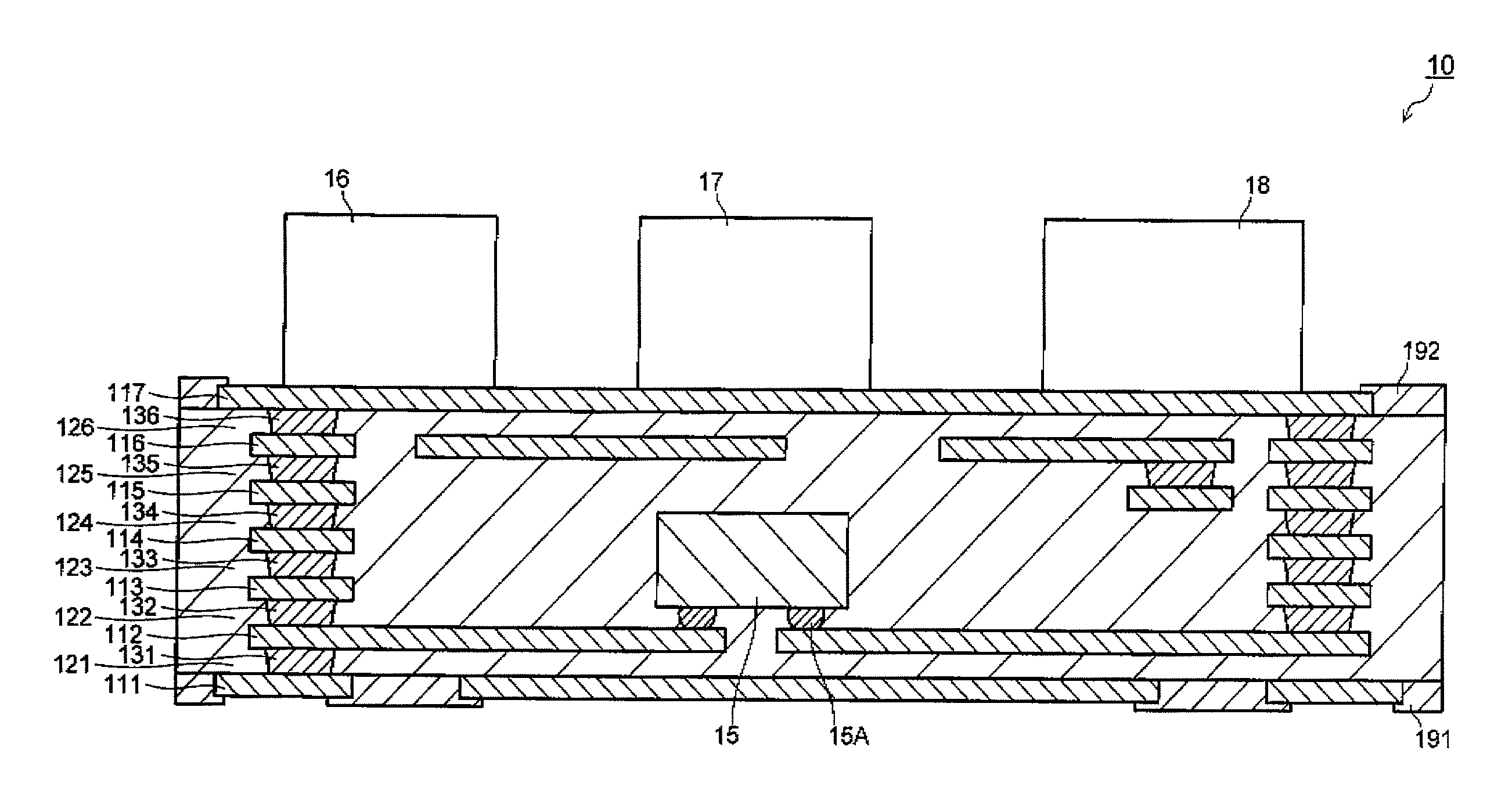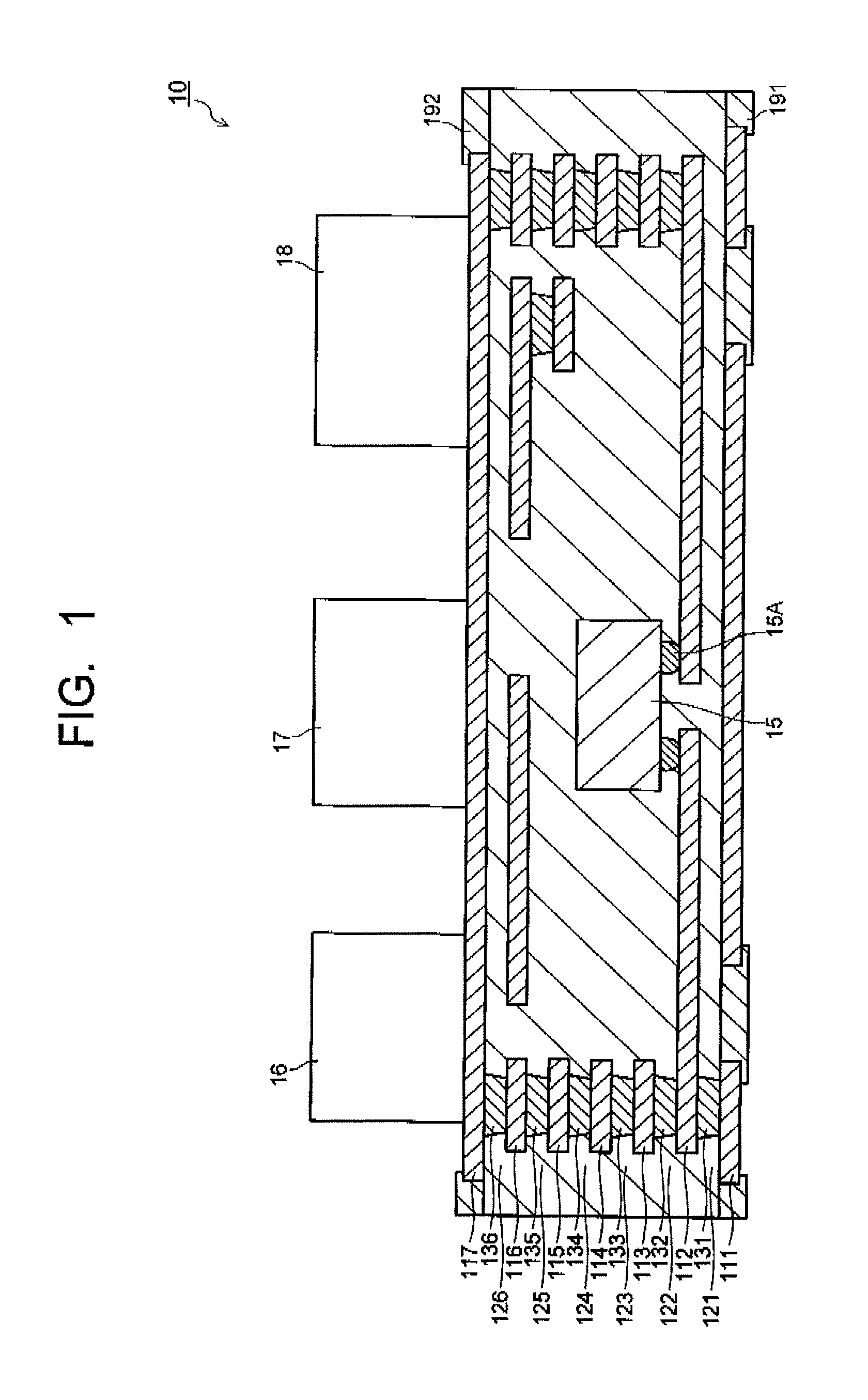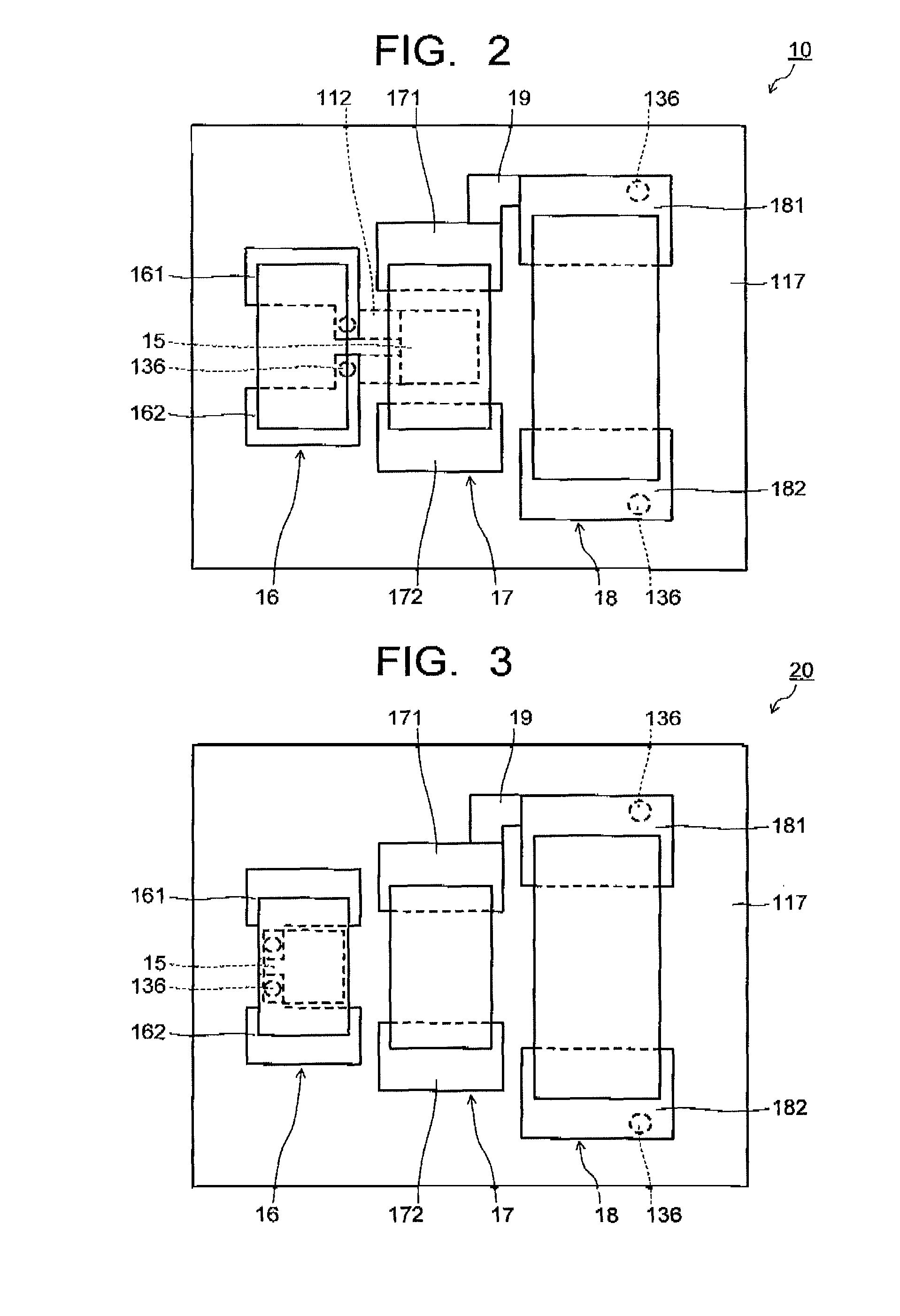Voltage conversion module
a voltage conversion module and voltage conversion technology, applied in the direction of cross-talk/noise/interference reduction, printed electric component incorporation, printed circuit non-printed electric components association, etc., can solve the problem of not being able to obtain stable output voltage, capacitors, multi-layer wiring boards, etc., to achieve stable output voltage and reduce noise on input voltage.
- Summary
- Abstract
- Description
- Claims
- Application Information
AI Technical Summary
Benefits of technology
Problems solved by technology
Method used
Image
Examples
first embodiment
[0029]FIG. 1 is a partial cross-sectional configuration diagram illustrating a voltage conversion module of the present embodiment, while FIG. 2 is a top plan view of the voltage conversion module illustrated in FIG. 1. As is obvious from FIG. 1 and FIG. 2, only a portion of a multilayer wiring board of the voltage conversion module is illustrated in a cross section in FIG. 1.
[0030]A voltage conversion module 10 illustrated in FIG. 1 has, in sequence from a lower side, a first wiring pattern 111, a second wiring pattern 112, a third wiring pattern 113, a fourth wiring pattern 114, a fifth wiring pattern 115, a sixth wiring pattern 116, and a seventh wiring pattern 117.
[0031]Further, between the adjacent wiring patterns among the first wiring pattern 111 to the seventh wiring pattern 117, there are interposed a first insulating member 121 to a sixth insulating member 126, respectively.
[0032]More specifically, the first insulating member 121 exists between the first wiring pattern 111...
second embodiment
[0057]FIG. 3 is a top plan view illustrating an example of a voltage conversion module of the present embodiment. It should be noted that a component the same as or similar to the component illustrated in FIG. 1 and FIG. 2 related to the first embodiment is represented by using the same reference numeral.
[0058]As illustrated in FIG. 3, a voltage conversion module 20 of the present embodiment is configured such that a voltage conversion IC 15 is positioned, in a multilayer wiring board, directly below a first capacitor 16 mounted on the multilayer wiring board. In this case, since a length of a wiring connecting the voltage conversion IC 15 and the first capacitor 16 can be made shorter, an inductance value and a resistance value of the wiring can be reduced, so that the noise elimination of the voltage conversion IC 15 can be performed more effectively.
[0059]It should be noted that other features and configurations are the same as those of the first embodiment, and explanation there...
third embodiment
[0063]FIG. 4 is a partial cross-sectional configuration diagram illustrating an example of a voltage conversion module of the present embodiment, while FIG. 5 is a top plan view of the voltage conversion module illustrated in FIG. 4. As is obvious from FIG. 4 and FIG. 5, only a portion of a multilayer wiring board of the voltage conversion module is illustrated in a cross section in FIG. 4. It should be noted that a component the same as or similar to the component illustrated in FIG. 1 and FIG. 2 related to the first embodiment is represented by using the same reference numeral.
[0064]A voltage conversion module 30 illustrated in FIG. 4 has, similarly to the voltage conversion module 10 illustrated in FIG. 1, in sequence from a lower side, a first wiring pattern 111, a second wiring pattern 112, a third wiring pattern 113, a fourth wiring pattern 114, a fifth wiring pattern 115, a sixth wiring pattern 116, and a seventh wiring pattern 117. Further, between the adjacent wiring patter...
PUM
 Login to View More
Login to View More Abstract
Description
Claims
Application Information
 Login to View More
Login to View More - R&D
- Intellectual Property
- Life Sciences
- Materials
- Tech Scout
- Unparalleled Data Quality
- Higher Quality Content
- 60% Fewer Hallucinations
Browse by: Latest US Patents, China's latest patents, Technical Efficacy Thesaurus, Application Domain, Technology Topic, Popular Technical Reports.
© 2025 PatSnap. All rights reserved.Legal|Privacy policy|Modern Slavery Act Transparency Statement|Sitemap|About US| Contact US: help@patsnap.com



